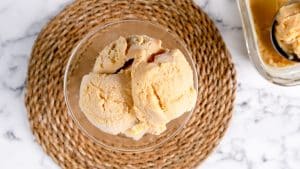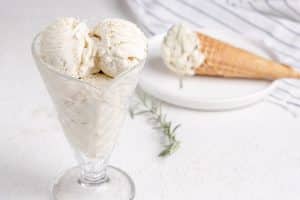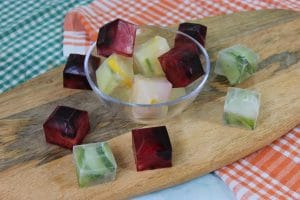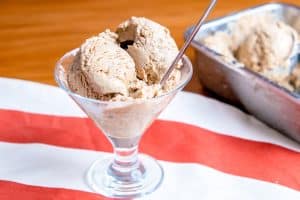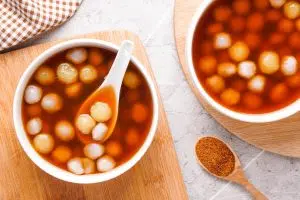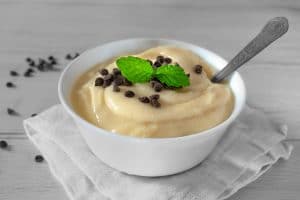How Much Is A Scoop Of Ice Cream?
Important Note: When you buy through our links, we may earn a commission. As an Amazon Associate we earn from qualifying purchases. Content, pricing, offers and availability are subject to change at any time - more info.
It is no secret that Americans adore ice cream, no matter the season. In fact, 87% of Americans keep ice cream in their freezer at all times. We consume ice cream on cones, in milkshakes, in disposable ice cream cups, and even straight from the carton with a spoon. However, you may have wondered just how much of this decadent frozen treat comprises a single scoop.
Quick Answer: According to the U.S Food and Drug Administration, a scoop of ice cream is regarded as one portion or approximately 2.5 oz. However, since ice creams are commonly served in a cup, which is 8 oz., the average serving size of ice cream is 3 to 4 oz. The standard ice cream scoop itself has roughly 4 oz. in capacity but it depends on the scoop.
| Ice Cream Container | Number of Scoops |
|---|---|
| Gallon | 32 |
| Half Gallon | 16 |
| Pint | 4 |
| Cup | 2 |
| Standard Cone | 1 |
There are several factors than go into quantifying a simple scoop of ice cream. Depending on your intention behind measuring the scoop, you can portion it by volume, calorie density, or nutritional value.
- Can Scoop Size Vary?
- Is Ice Cream Measured by Weight or Volume?
- How Many Calories Are in a Scoop of Ice Cream?
- Top Tips for the Perfect Scoop of Ice Cream
- How Many Scoops of Ice Cream Can You Have Per Day?
- So, How Much Is A Scoop Of Ice Cream?
Can Scoop Size Vary?
The national guidelines stipulate the recommended portion size, or scoop, of ice cream based on a scoop with a 2.5-inch diameter. However, there are a variety of different scoop sizes that hold different volumes of ice cream. The table below outlines the amount of ice cream found in each scoop size.
| Scoop diameter in inches | Fluid oz. | Cup | Number of scoops per cup |
| 3 | 5.33 | 0.667 | 1.5 |
| 2 and 3/4 | 4 | 0.5 | 2 |
| 2 and 5/8 | 3.2 | 0.4 | 2.5 |
| 2 and ½ | 2.67 | 0.333 | 3 |
| 2 and 5/16 | 2 | 0.250 | 4 |
| 2 and 1/8 | 1.6 | 0.2 | 5 |
| 2 | 1.33 | 0.167 | 6 |
| 1 and 7/8 | 1.07 | 0.133 | 7.5 |
| 1 and 5/8 | 0.8 | 0.1 | 10 |
Is Ice Cream Measured by Weight or Volume?
Although a fresh scoop of ice cream sturdily sits atop a sugar cone, it quickly begins to melt. This can make determining which units of measurement to use confusing. You may expect to see ice cream measured in oz and lbs.; instead, you see its measurements in gallons, quarts, and pints. This is because your favorite frozen dessert is, in fact, comprised of 40 to 50% air, which is measured by volume.
Ice cream is a whipped dairy product that contains a carefully calculated quantity of air, known as ‘overrun,’ that produces its light and creamy texture. Without incorporating air, ice cream is far more dense and colder than desired.
However, the food industry is not entirely robbing you of 50% of your beloved chilled treat. The American Food and Drug Association stipulates that a product is only deemed ice cream if it weighs no less than 4.5 lbs. to the gallon. This limits the amount of overrun that industries may add to ice cream products.
How Many Calories Are in a Scoop of Ice Cream?
According to the United States Department of Agriculture, there are approximately 140 calories in a serving, or 2.5 ounces, of ice cream. Should you opt for a more diet-friendly alternative, you may be surprised to know that there are about 130 calories in a serving of low-fat ice cream and 115 calories in a portion of no added sugar ice cream.
These fat and sugar-free alternatives carry a similar calorie content as regular ice cream, despite being marketed as healthier frozen desserts. Furthermore, these products often contain artificial sweeteners that may cause gastrointestinal distress, such as bloating and flatulence.
Although ice cream is a source of calcium and phosphorous, essential minerals for healthy muscles and bones, the high calorie and sugar content does not warrant ice cream as a rich source of nutrients.
Top Tips for the Perfect Scoop of Ice Cream
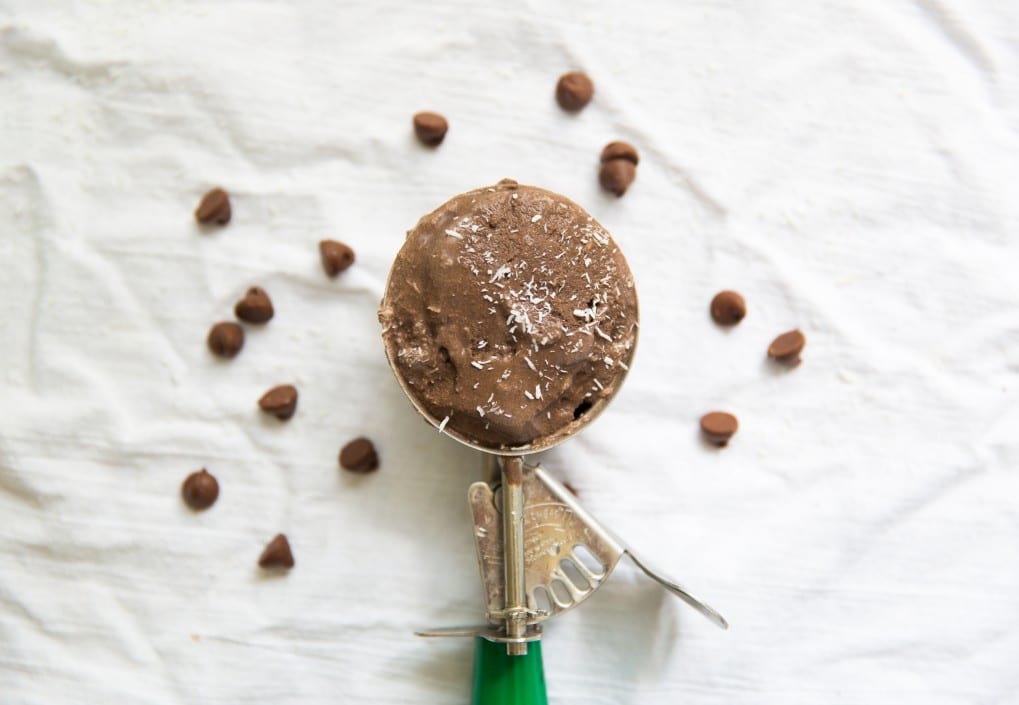
We’ve all had ice cream that comes out of the freezer as a frozen block that is hard to scoop and causes far too much anguish for a dish that should put a smile on your face. However, these ice cream scooping tactics will guarantee that your spoons will no longer end up bent.
- Store your ice cream tub in sealed plastic bag. Squeeze as much of the air out of the bag as possible to protect your ice cream from the air, therefore keeping it softer and simpler to scoop.
- Run your scoop under hot water before serving to soften the ice cream and effortlessly scoop it.
- If you are planning to serve an entire tub of ice cream, heat a knife in hot water. Once warm, cut the ice cream into a checkerboard pattern, about one inch deep.
- Scoop your ice cream in the form of an “S.” Scooping from the middle is inefficient since the tub melts from the outside in.
- Although ice cream is stored between -5 and 0 °F, you should allow your ice cream to warm to between 6 and 10 °F before serving to achieve a more effortless scooping motion.
How Many Scoops of Ice Cream Can You Have Per Day?
There is a place for your favorite frozen treat in your healthy and balanced diet. The secret ingredient is moderation. According to the American Heart Association’s daily sugar intake, you may have one to two servings of ice cream per day.
Remember to carefully read the product label before adding a pint to your cart – this will give you important information about your portion size. Furthermore, purchasing pre-portioned items, such as ice cream bars or single-serving tubs might help you avoid overindulging. Alternatively, use smaller bowls to keep your servings in check.
Remember that while low-fat or low-sugar products may appear to be healthier, they are not necessarily more nutritious or fewer in calories than other options – and they may include artificial chemicals. Use caution and read labels carefully.
So, How Much Is A Scoop Of Ice Cream?
Although the U.S Food and Drug Administration regards a scoop of ice cream as approximately 2.5 oz., the average serving size is 3 to 4 oz. of ice cream in an eight oz. cup. Furthermore, the range of available scoop sizes means that there is no single value of ice cream per scoop. The amount of ice cream in a scoop varies depending on the diameter of your ice cream scoop.
Ice cream is measured in volumetric units since more than half of the product is comprised of air. Alternatively, ice cream may be measured by its calorie content. These units of measurement are not an indication of the nutritional value of ice cream since sugar and fat-free formulations commonly contain unhealthy additives.





